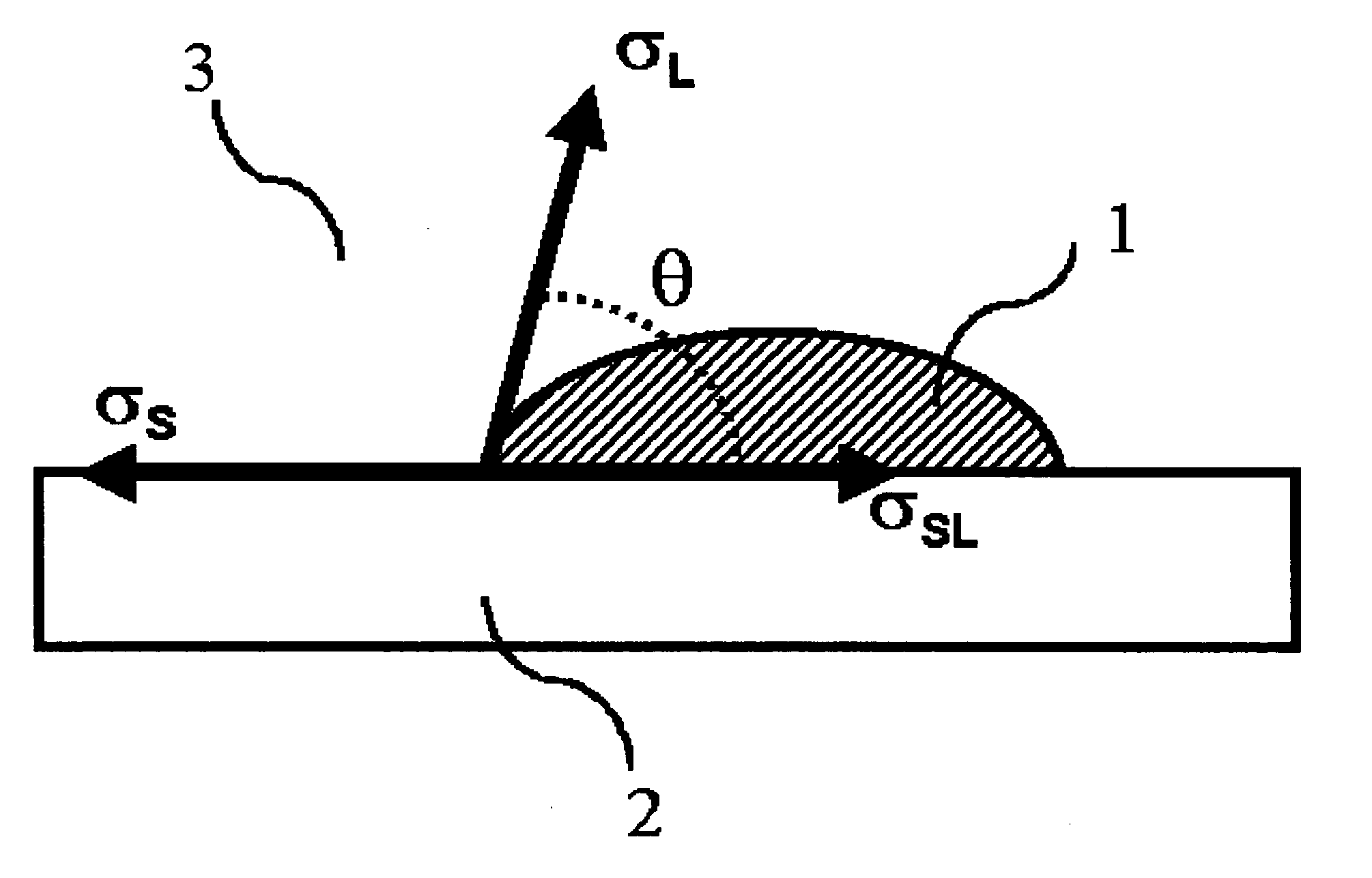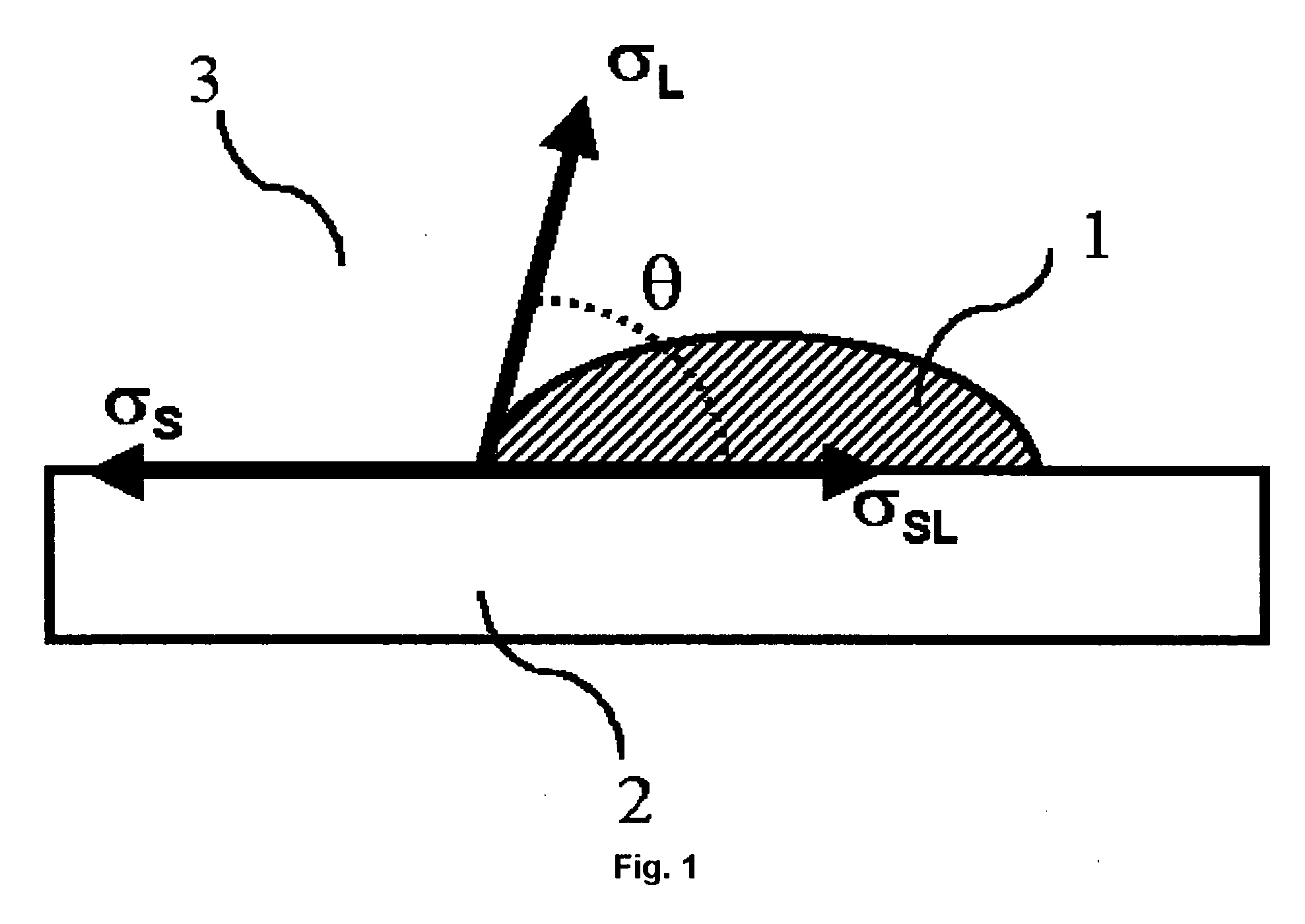Ink-jet printing system
a technology of inkjet printing and inkjet printer, which is applied in the direction of inks, printing, instruments, etc., can solve the problems of toxic or inflammable vapours, complex behaviour of uv-curable ink on a substantially non-absorbing ink-receiver, and achieve the effect of high areal throughpu
- Summary
- Abstract
- Description
- Claims
- Application Information
AI Technical Summary
Benefits of technology
Problems solved by technology
Method used
Image
Examples
example 1
[0164] In this example, different ink-receiver surfaces were prepared by coating a layer on a 100 μm thick PET substrate as described below.
[0165] Ink-Receiver Surface REC-1:
[0166] A coating solution was prepared by the mixing of 54.85 mL of a 42.75% latex based on a copolymer of vinylidene chloride-methylacrylate-itaconic acid-ethylacrylate (CAS 29757-50-4), 17.3 mL of Kieselsol™ 100F-30 and 7.2 mL of Mersolat™ H76-solution (3.69% in water) and 5.9 mL of a 5%-solution of Hostapon™ T in water. This coating solution was then applied by air knife coating to a uniaxially oriented PET (140 m2 / L), dried at 150° C. of air temperature and stretched in a transversal direction (factor 3.6) to provide the ink-receiver surface REC-1.
[0167] Ink-Receiver Surface REC-2:
[0168] A coating solution was prepared by the mixing of 246 mL of a 32% latex based on a copolymer of 88 wt % vinylidene chloride, 10 wt % methylacrylate and 2 wt % itaconic acid, 48 mL of Kieselsol™ 100F-30, 0.37 g of Mersolat...
example 2
[0180] In this example, 30 pL droplets of three different inks were jetted by means of a Spectra SL-128 print head with a droplet velocity of 2 m / s on four different ink-receiver surfaces.
[0181] The four different ink-receiver surfaces used, are: [0182] REC-7=100 μm thick unsubbed PET [0183] REC-8=REC-7 provided with a subbing layer described below [0184] REC-9=Teich 74 [0185] REC-10=Teich 75
[0186] A coating solution was prepared by mixing of 696 mL of water, 246 mL of a 30% latex based on a copolymer of vinylidene dichloride-methylacrylate-itaconic acid, 48 mL of Kieselsol™ 100F-30 and 10 mL of a 4.85% solution of Mersolat™ H in water. The coating solution had a viscosity of 1.2 mPa.s at 25° C. The ink-receiver surface REC-8 was then prepared by coating this coating solution on REC-7 (140 m2 / L), drying it at 150° C. air temperature and stretching it in transversal direction (factor 3.6).
[0187] The properties of the four ink-receiver surfaces are shown in Table 3. The sum of the ...
example 3
[0195] In this example the effect on the spreading factor of an UV-curable ink of a surface treatment on PE Telcon™ is investigated. The surface treatment consisted of a 300 J / m2 corona treatment.
[0196] The properties of the treated and untreated ink-receiver surfaces are shown in Table 6. The sum of the dispersive surface energy σSd and the polar surface energy σSp is the surface energy σS.
TABLE 6Ink-receiverCoronaσSpσSdσSsurfaceTreatment(mJ / m2)(mJ / m2)(mJ / m2)REC-1No1.827.529.3REC-2Yes13.030.143.1
[0197] The coated samples were printed on a DOTRIX THE.FACTORY with the magenta ink of Example 1, i.e. the magenta ink of the AVECIA PRO-JET ULTRA T1A-CMYK inkjet ink-set available from AVECIA (United Kingdom).
[0198] The printed samples were cured with a 248 W / cm UV mercury lamp available from PRINT CONCEPT (Germany) in a nitrogen atmosphere with 7% O2 at a power level of 2.6 W / cm2 and a curing speed of 24 m / min.
[0199] The spreading factor was then determined. For an efficient fill-in ...
PUM
| Property | Measurement | Unit |
|---|---|---|
| Kinematic viscosity | aaaaa | aaaaa |
| Kinematic viscosity | aaaaa | aaaaa |
| Surface energy | aaaaa | aaaaa |
Abstract
Description
Claims
Application Information
 Login to View More
Login to View More - R&D
- Intellectual Property
- Life Sciences
- Materials
- Tech Scout
- Unparalleled Data Quality
- Higher Quality Content
- 60% Fewer Hallucinations
Browse by: Latest US Patents, China's latest patents, Technical Efficacy Thesaurus, Application Domain, Technology Topic, Popular Technical Reports.
© 2025 PatSnap. All rights reserved.Legal|Privacy policy|Modern Slavery Act Transparency Statement|Sitemap|About US| Contact US: help@patsnap.com



